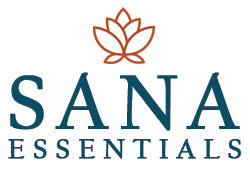Aromatic plants and their oils have been used for thousands of years–for incense, perfumes, cosmetics, culinary use, and for their therapeutic and medicinal applications. In many ancient civilizations and cultures, these plants and oils were sacred, or holy, and were employed in spiritual and religious ceremonies, rituals and practices.
There are records dating back to around 2800 BC of the use of medicinal herbs and oils by Ancient Egyptians. Oils such as frankincense, myrrh, cinnamon, juniper berry and cedarwood were used in the embalming process and for preserving the bodies of their royalty. In 1923, when archeologists opened the tomb of King Tut, alabaster jars containing essential oils were found–some still full! The Egyptians also used fragranced oils for perfumes and other personal beauty treatments as well. There is evidence of oil recipes written in hieroglyphics on the walls. There is also evidence that there were temples dedicated to the production and blending of essential oils.

There are over 700 substances found in the ancient Vedic literature of India, which dates back to around 2000 BC. The aromatic plants and oils were used not only for perfumes but for liturgical and therapeutic purposes as well.
There is speculation of ancient Chinese culture pioneering the use of herbs and essential oils for medicinal purposes around the time of the Egyptians, possibly before. The Chinese were testing the medicinal values of essential oils, and became aware of their actions and properties (i.e. some have a cooling or warming effect, or some have a sedative or energizing effect).
Fast forward in time…Aromatic plants, spices, gums and oils were being exported throughout the Mediterranean region–particularly in Greece and Rome. Hippocrates, born in Greece about 460 BC, known as the “father of western medicine”, studied plants, and believed that plant-based medicine should be used first to heal and treat illnesses, and then surgery only as a last resort.
Aromatics and essential oils are referred to extensively throughout the Bible in both the Old and the New Testaments. In the book of Exodus, a specific formula, or recipe, was given to Moses directly from God to be used as “sacred anointing oil”, which would be used for pouring onto the heads of the men being appointed as kings or leaders, or for people being prayed over by priests. Oils are also mentioned in the bible being used for healing the sick and used as expensive perfumes. There are multiple accounts in the Gospel of women honoring Jesus by anointing him with oil. Frankincense, myrrh, cinnamon, cedarwood, cassia, and cypress were just a few mentioned.

Jump ahead to the Renaissance period. At this time, the pharmacopeias (the official publication of medicinal drugs and their effects) were still filled with aromatic materials, and they remained the primary defense against sicknesses and epidemics. However, by the end of the seventeenth century, with the profession of perfumery on the rise, a distinction was made between perfumes and aromatics, and essential oils were becoming more commonly used for perfumes and cosmetics.
By the early nineteenth century, chemists were studying oils and identifying the different constituents, giving them specific names (carvacrol, eugenol, cineol, etc). Soon, major pharmaceutical companies were emerging and synthetic drugs began gaining momentum. Even though plant-based medicine laid the ground for the development of these synthetic drugs, herbal and aromatic remedies became unpopular and were reduced to the realm of ostensible folk medicine, or known only for their use in perfumes and cosmetics.
